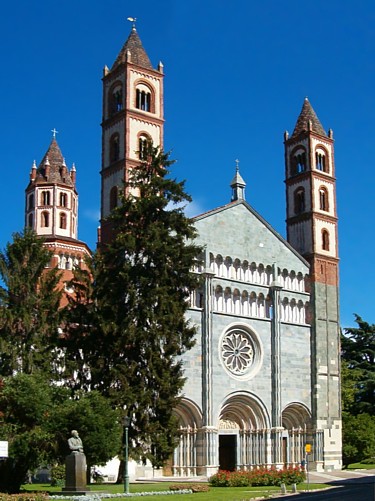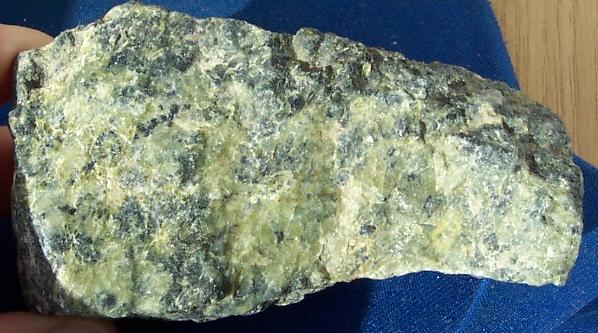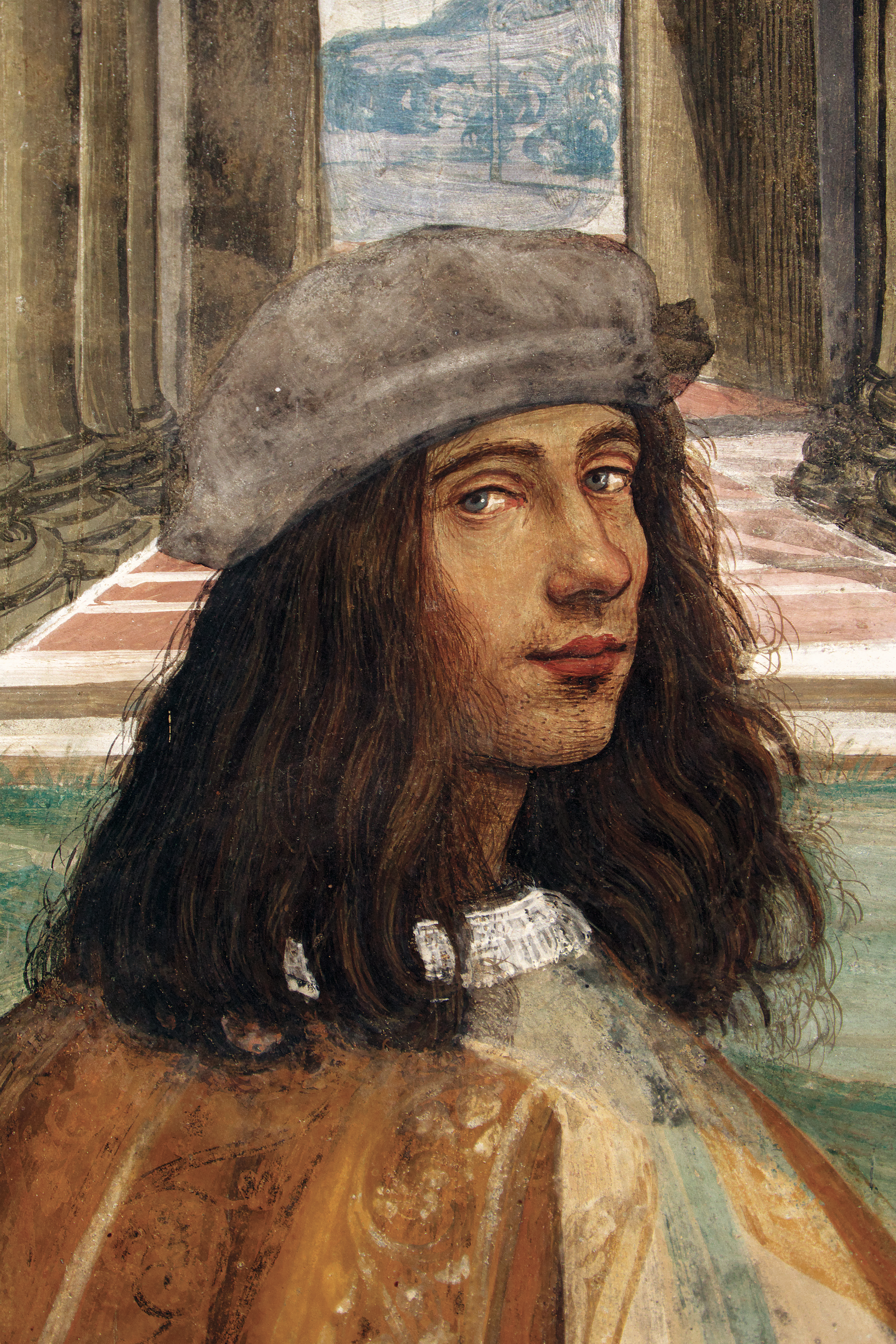|
Basilica Di Sant'Andrea
The Basilica di Sant'Andrea is the church of a monastery in Vercelli, Piedmont, northern Italy, founded in 1219 by Cardinal Guala Bicchieri and completed in 1227. It represents an early example of Gothic architecture in Italy, inspired by Cistercian models and featuring Romanesque elements as well. History The basilica was built between 1219 and 1227 at the direction of Cardinal Guala Bicchieri, who had just returned from England where he had been papal legate. Bicchieri had received from King Henry III the perpetual rights to the income of St Andrew's Church, Chesterton, near Cambridge. Thanks to this financial support, the cardinal was able to call to Vercelli some Augustinian canons from Saint-Victor in Paris, giving them responsibility over the new abbey and the hospital to be built for the pilgrims who travelled the Via Francigena. The hospital was begun in 1224. Although the architect is unknown, it is presumed that the Gothic lines of the new edifice were introduced by ... [...More Info...] [...Related Items...] OR: [Wikipedia] [Google] [Baidu] |
Frederick II, Holy Roman Emperor
Frederick II (German language, German: ''Friedrich''; Italian language, Italian: ''Federico''; Latin: ''Federicus''; 26 December 1194 – 13 December 1250) was King of Sicily from 1198, King of Germany from 1212, King of Italy and Holy Roman Emperor from 1220 and King of Jerusalem from 1225. He was the son of emperor Henry VI, Holy Roman Emperor, Henry VI of the House of Hohenstaufen, Hohenstaufen dynasty and Queen Constance, Queen of Sicily, Constance of Sicily of the Hauteville family, Hauteville dynasty. His political and cultural ambitions were enormous as he ruled a vast area, beginning with Sicily and stretching through Italy all the way north to Germany. As the Crusades progressed, he acquired control of Jerusalem and styled himself its king. However, the Papacy became his enemy, and it eventually prevailed. Viewing himself as a direct successor to the Roman emperors of antiquity, he was Holy Roman Emperor, Emperor of the Romans from his papal coronation in 1220 until hi ... [...More Info...] [...Related Items...] OR: [Wikipedia] [Google] [Baidu] |
Serpentine Group
Serpentine subgroup (part of the kaolinite-serpentine group in the category of phyllosilicates) are greenish, brownish, or spotted minerals commonly found in serpentinite. They are used as a source of magnesium and asbestos, and as decorative stone. The name comes from the greenish colour and smooth or scaly appearance from the Latin , meaning "serpent rock". Serpentine subgroup is a set of common rock-forming hydrous magnesium iron phyllosilicate () minerals, resulting from the metamorphism of the minerals that are contained in mafic to ultramafic rocks. They may contain minor amounts of other elements including chromium, manganese, cobalt or nickel. In mineralogy and gemology, serpentine may refer to any of the 20 varieties belonging to the serpentine subgroup. Owing to admixture, these varieties are not always easy to individualize, and distinctions are not usually made. There are three important mineral polymorphs of serpentine: antigorite, lizardite and chrysotile. Serpen ... [...More Info...] [...Related Items...] OR: [Wikipedia] [Google] [Baidu] |
Montferrat
Montferrat (, ; it, Monferrato ; pms, Monfrà , locally ; la, Mons Ferratus) is part of the region of Piedmont in northern Italy. It comprises roughly (and its extent has varied over time) the modern provinces of Alessandria and Asti. Montferrat is one of the most important wine districts of Italy. It also has a strong literary tradition, including the 18th century Asti-born poet and dramatist Vittorio Alfieri and the Alessandrian Umberto Eco. The territory is cut in two by the river Tanaro. The northern part (the Basso Monferrato, "Low Montferrat"), which lies between that river and the Po, is an area of rolling hills and plains. The southern part (the Alto Monferrato, "High Montferrat") rises from the banks of the Tanaro into the mountains of the Apennines and the water divide between Piedmont and Liguria. On 22 June 2014, Montferrat was declared a UNESCO World Heritage Site. History Originally a county, it was elevated to a margravate of the Holy Roman Empire unde ... [...More Info...] [...Related Items...] OR: [Wikipedia] [Google] [Baidu] |
Calcarenite
Calcarenite is a type of limestone that is composed predominantly, more than 50 percent, of detrital (transported) sand-size (0.0625 to 2 mm in diameter), carbonate grains. The grains consist of sand-size grains of either corals, shells, ooids, intraclasts, pellets, fragments of older limestones and dolomites, other carbonate grains, or some combination of these. Calcarenite is the carbonate equivalent of a sandstone. The term calcarenite was originally proposed in 1903 by GrabauGrabau, A.W. (1903) ''Paleozoic coral reefs.'' Geological Society of America Bulletin. vol. 14, pp. 337-352.Grabau, A.W. (1904) ''On the classification of sedimentary rocks.'' American Geologist. vol. 33, pp. 228-247. as a part of his calcilutite, calcarenite and calcirudite carbonate classification system based upon the size of the detrital grains composing a limestone.Flügel, E. (2010) ''Microfacies of Carbonate Rocks'', 2nd ed. Springer-Verlag Berlin, Germany. 976 pp. Neuendorf, K.K.E., J.P. Mehl, ... [...More Info...] [...Related Items...] OR: [Wikipedia] [Google] [Baidu] |
Pralungo
Pralungo is a ''comune'' (municipality) in the Province of Biella in the Italian region Piedmont, located about northeast of Turin and just north of Biella. The municipality of Pralungo contains the ''frazioni'' (subdivisions, mainly villages and hamlets) Valle and Sant'Eurosia. Pralungo borders the following municipalities: Biella, Sagliano Micca, Tollegno Tollegno is a ''comune'' (municipality) in the Province of Biella in the Italian region Piedmont, located about northeast of Turin and about northwest of Biella. As of 31 December 2004, it had a population of 2,678 and an area of .All demographic .... References Cities and towns in Piedmont {{Biella-geo-stub ... [...More Info...] [...Related Items...] OR: [Wikipedia] [Google] [Baidu] |
Vercelli Sant Andrea Facciata Lunetta Centrale
Vercelli (; pms, Vërsèj ), is a city and ''comune'' of 46,552 inhabitants (January 1, 2017) in the Province of Vercelli, Piedmont, northern Italy. One of the oldest urban sites in northern Italy, it was founded, according to most historians, around 600 BC. The city is situated on the Sesia River in the plain of the Po River between Milan and Turin. It is an important centre for the cultivation of rice and is surrounded by rice paddies, which are flooded in the summer. The climate is typical of the Po Valley with cold, foggy winters ( in January) and oppressive heat during the summer months ( in July). Rainfall is most prevalent during the spring and autumn; thunderstorms are common in the summer. The languages spoken in Vercelli are Italian and Piedmontese; the variety of Piedmontese native to the city is called ''Varsleis''. The world's first university funded by public money was established in Vercelli in 1228 (the seventh university founded in Italy), but was closed in 1 ... [...More Info...] [...Related Items...] OR: [Wikipedia] [Google] [Baidu] |
Transept
A transept (with two semitransepts) is a transverse part of any building, which lies across the main body of the building. In cruciform churches, a transept is an area set crosswise to the nave in a cruciform ("cross-shaped") building within the Romanesque and Gothic Christian church architectural traditions. Each half of a transept is known as a semitransept. Description The transept of a church separates the nave from the sanctuary, apse, choir, chevet, presbytery, or chancel. The transepts cross the nave at the crossing, which belongs equally to the main nave axis and to the transept. Upon its four piers, the crossing may support a spire (e.g., Salisbury Cathedral), a central tower (e.g., Gloucester Cathedral) or a crossing dome (e.g., St Paul's Cathedral). Since the altar is usually located at the east end of a church, a transept extends to the north and south. The north and south end walls often hold decorated windows of stained glass, such as rose windows, in sto ... [...More Info...] [...Related Items...] OR: [Wikipedia] [Google] [Baidu] |
Flying Buttress
The flying buttress (''arc-boutant'', arch buttress) is a specific form of buttress composed of an arch that extends from the upper portion of a wall to a pier of great mass, in order to convey lateral forces to the ground that are necessary to push a wall outwards. These forces arise from vaulted ceilings of stone and from wind-loading of roofs. The namesake and defining feature of a flying buttress is that it is not in contact with the wall at ground level, unlike a traditional buttress, and so transmits the lateral forces across the span of intervening space between the wall and the pier. To provide lateral support, flying-buttress systems are composed of two parts: (i) a massive pier, a vertical block of masonry situated away from the building wall, and (ii) an arch that bridges the span between the pier and the wall — either a segmental arch or a quadrant arch — the ''flyer'' of the flying buttress. History As a lateral-support system, the flying buttress was develope ... [...More Info...] [...Related Items...] OR: [Wikipedia] [Google] [Baidu] |
Buttress
A buttress is an architectural structure built against or projecting from a wall which serves to support or reinforce the wall. Buttresses are fairly common on more ancient buildings, as a means of providing support to act against the lateral (sideways) forces arising out of inadequately braced roof structures. The term ''counterfort'' can be synonymous with buttress and is often used when referring to dams, retaining walls and other structures holding back earth. Early examples of buttresses are found on the Eanna Temple (ancient Uruk), dating to as early as the 4th millennium BC. Terminology In addition to flying and ordinary buttresses, brick and masonry buttresses that support wall corners can be classified according to their ground plan. A clasping or clamped buttress has an L shaped ground plan surrounding the corner, an angled buttress has two buttresses meeting at the corner, a setback buttress is similar to an angled buttress but the buttresses are set back from the ... [...More Info...] [...Related Items...] OR: [Wikipedia] [Google] [Baidu] |
Latin Cross
A Latin cross or ''crux immissa'' is a type of cross in which the vertical beam sticks above the crossbeam, with the three upper arms either equally long or with the vertical topmost arm shorter than the two horizontal arms, and always with a much longer bottom arm. If displayed upside down it is called St. Peter's Cross, because he was reputedly executed on this type of cross.Joyce Mori, ''Crosses of Many Cultures'' (Harrisburg, PA: Morehouse Publishing, 1998), p. 32 When displayed sideways it is called St. Philip's cross for the same reason. History In a broad sense, the Latin cross is used to represent all of Christianity and Christendom, given that it teaches that Jesus sacrificed himself for humanity upon it, atoning for the sins of the world. It is especially used among the denominations of Western Christianity, including the Roman Catholic tradition and several Protestant traditions, such as Lutheranism, Moravianism, Anglicanism, Methodism, and Reformed Christianity, ... [...More Info...] [...Related Items...] OR: [Wikipedia] [Google] [Baidu] |
Turin City Museum Of Ancient Art
The Museo Civico d'Arte Antica is an art museum located in the Palazzo Madama in Turin, Italy. It has a renowned collection of paintings from the medieval, Renaissance and Baroque periods. It reopened in 2006 after several years of restorations. History The museum was founded in 1934, as the heir of the Pinacoteca Regia and the Galleria Reale, which had been established in Palazzo Madama by King Charles Albert of Savoy in 1832. A Civic Museum had been founded in 1860 in the wake of the unification of Italy although, three years later, the collections were moved to another location in Turin, in Via Gaudenzio Ferrari. These were increased gradually with acquisitions from private collectors, from closed residences of the House of Savoy, or from donations by the same family. In 1898 the collections of "ancient art" were separated from those of "modern art". The former were moved to the current location in 1934 by the director Vittorio Viale. The collection of Asian art, including ... [...More Info...] [...Related Items...] OR: [Wikipedia] [Google] [Baidu] |



